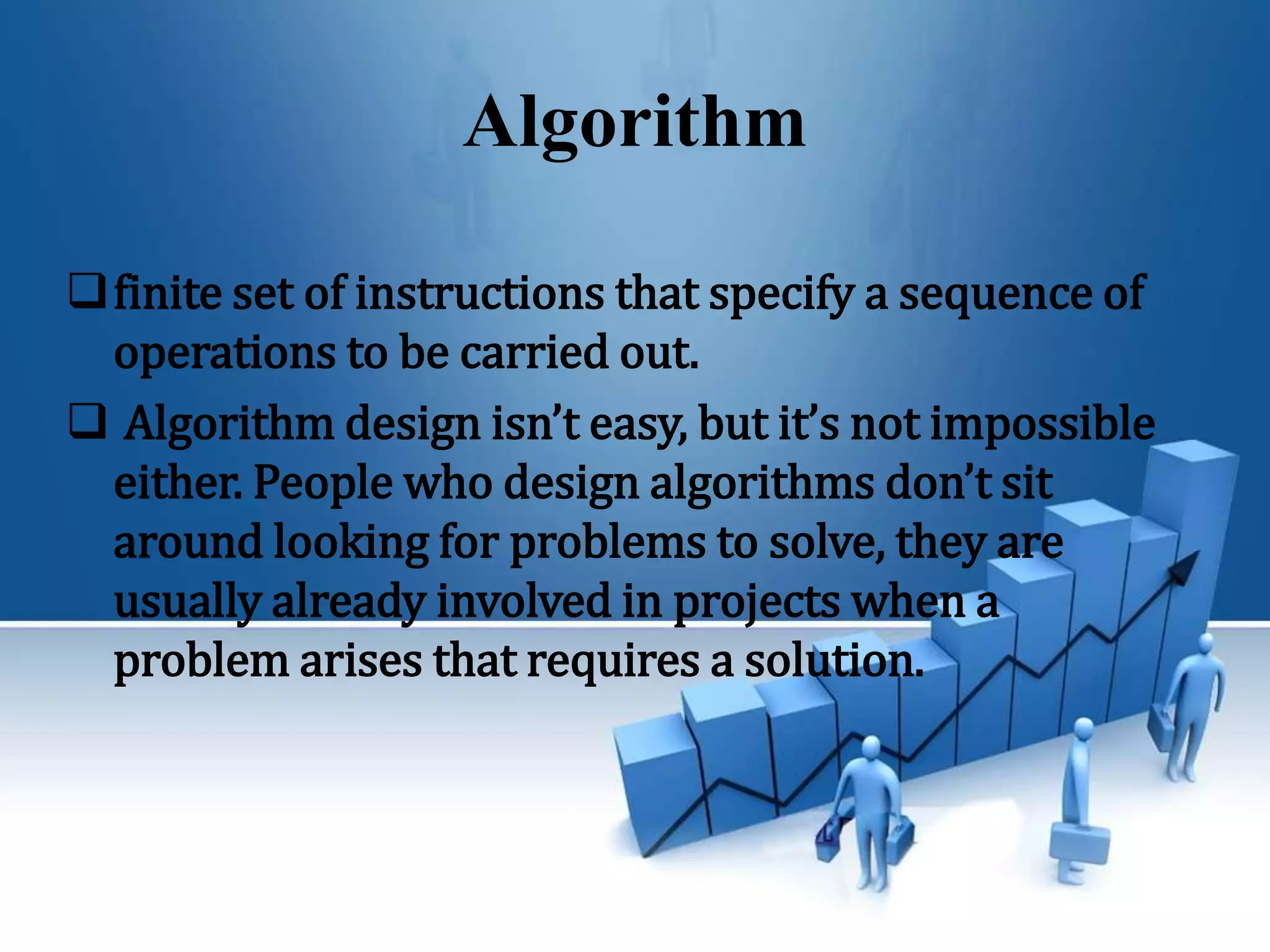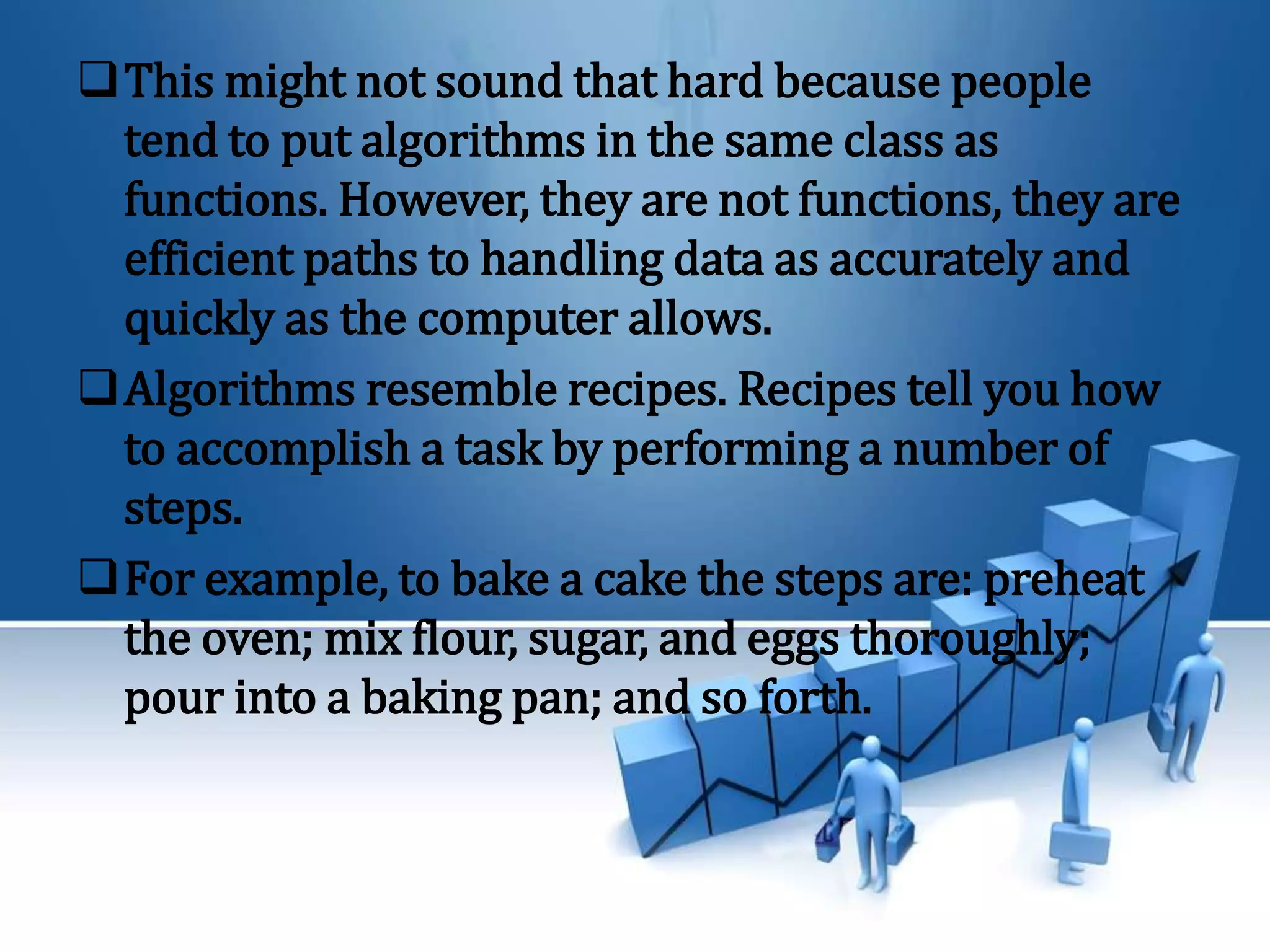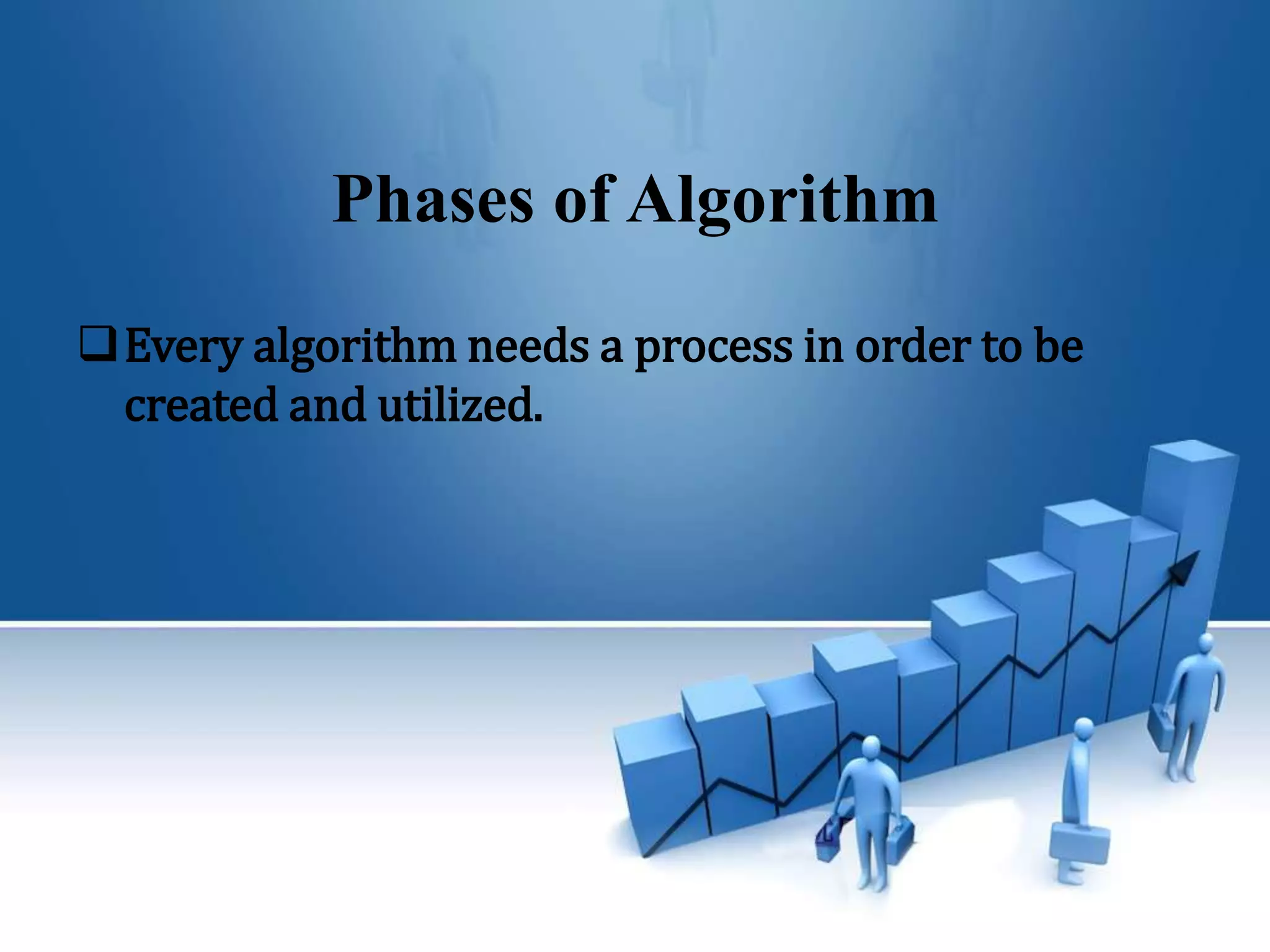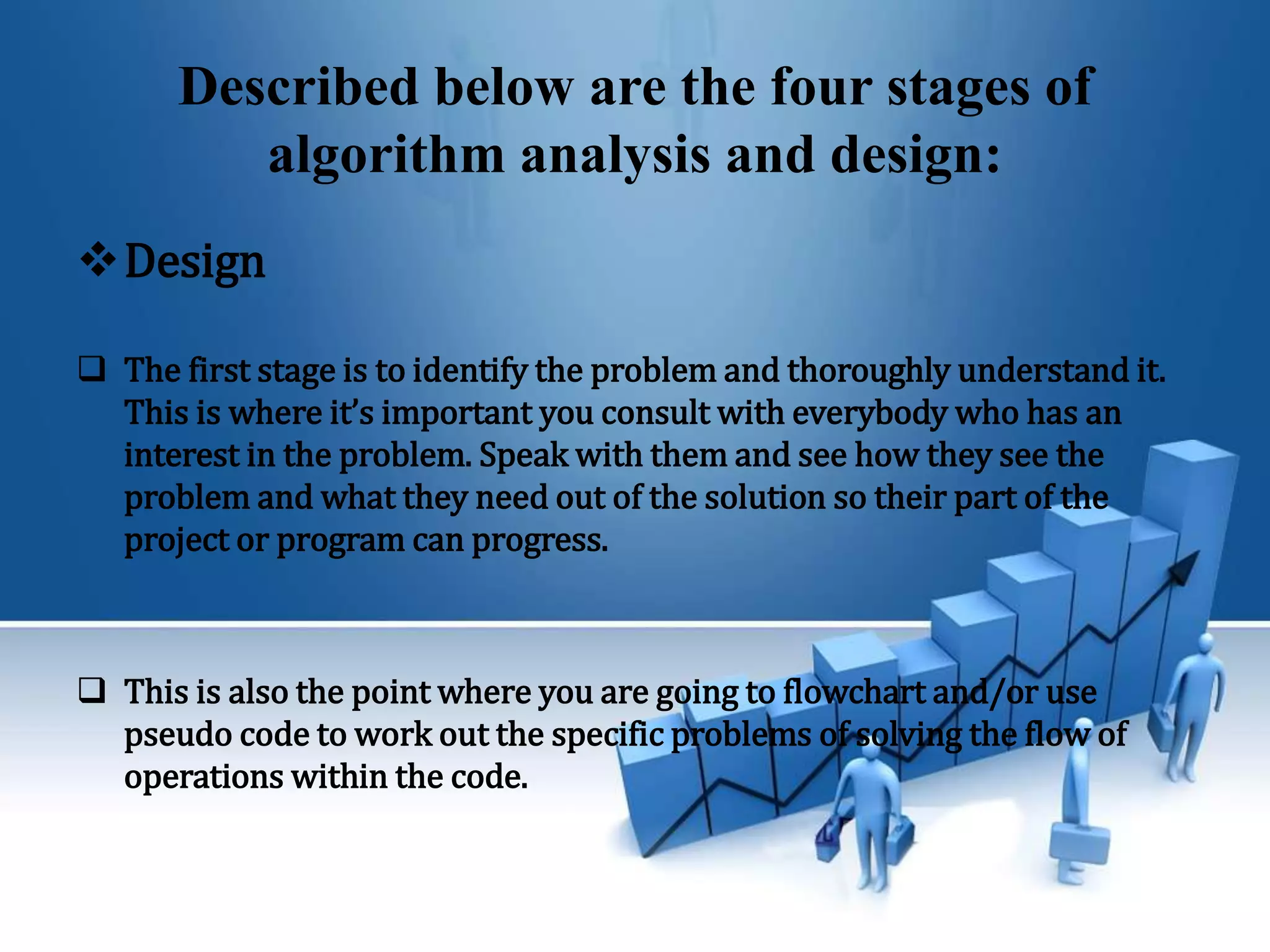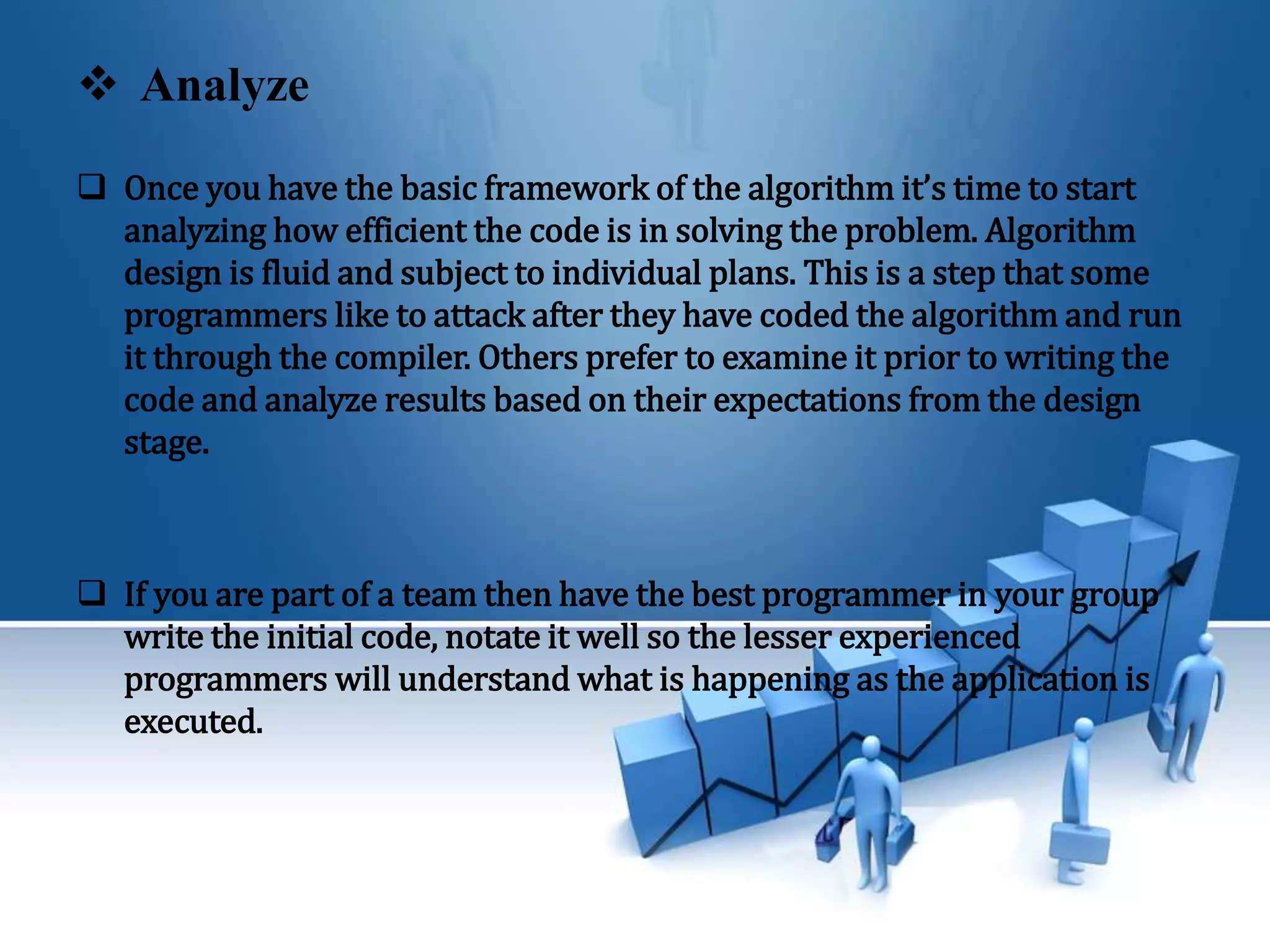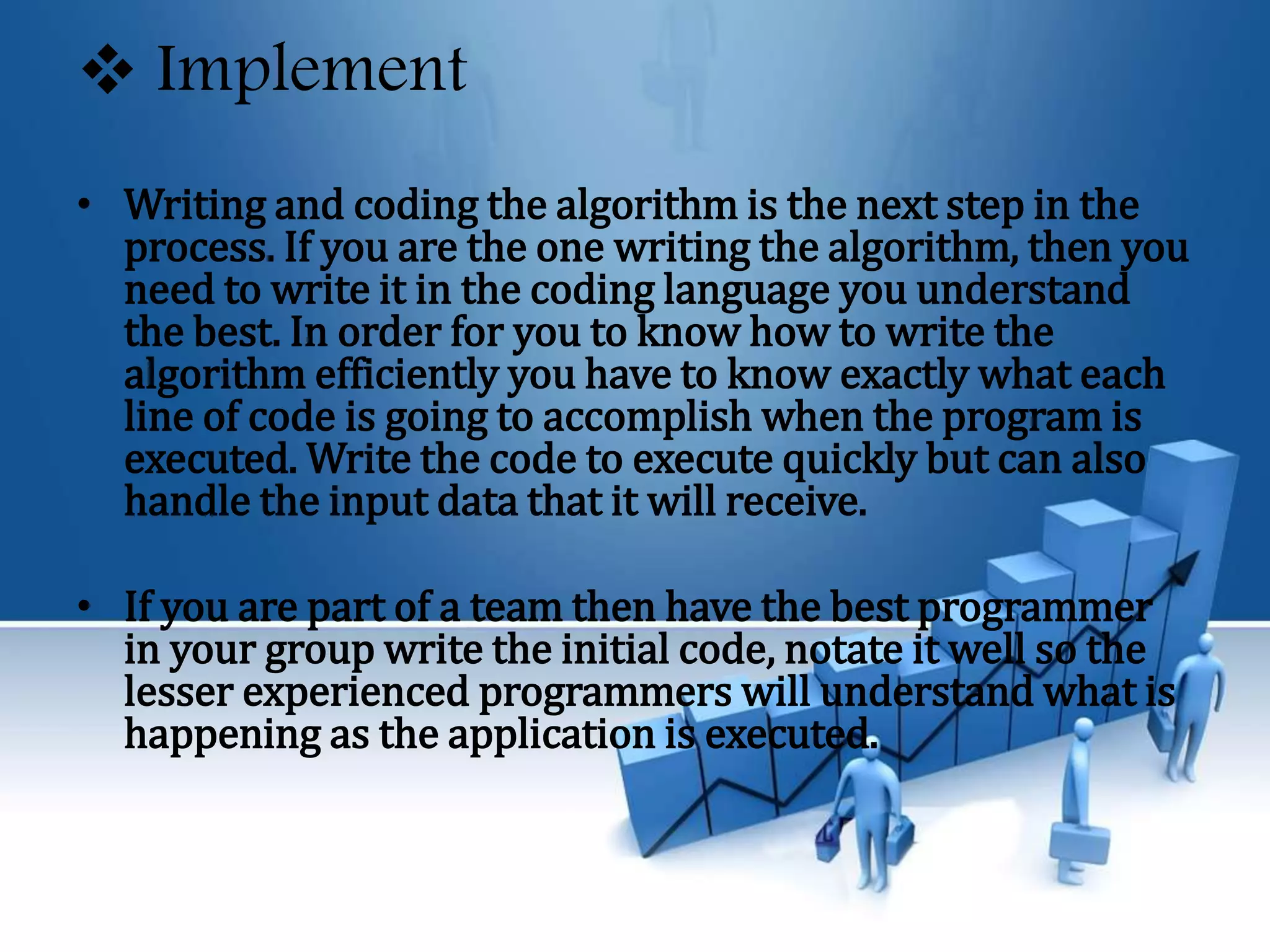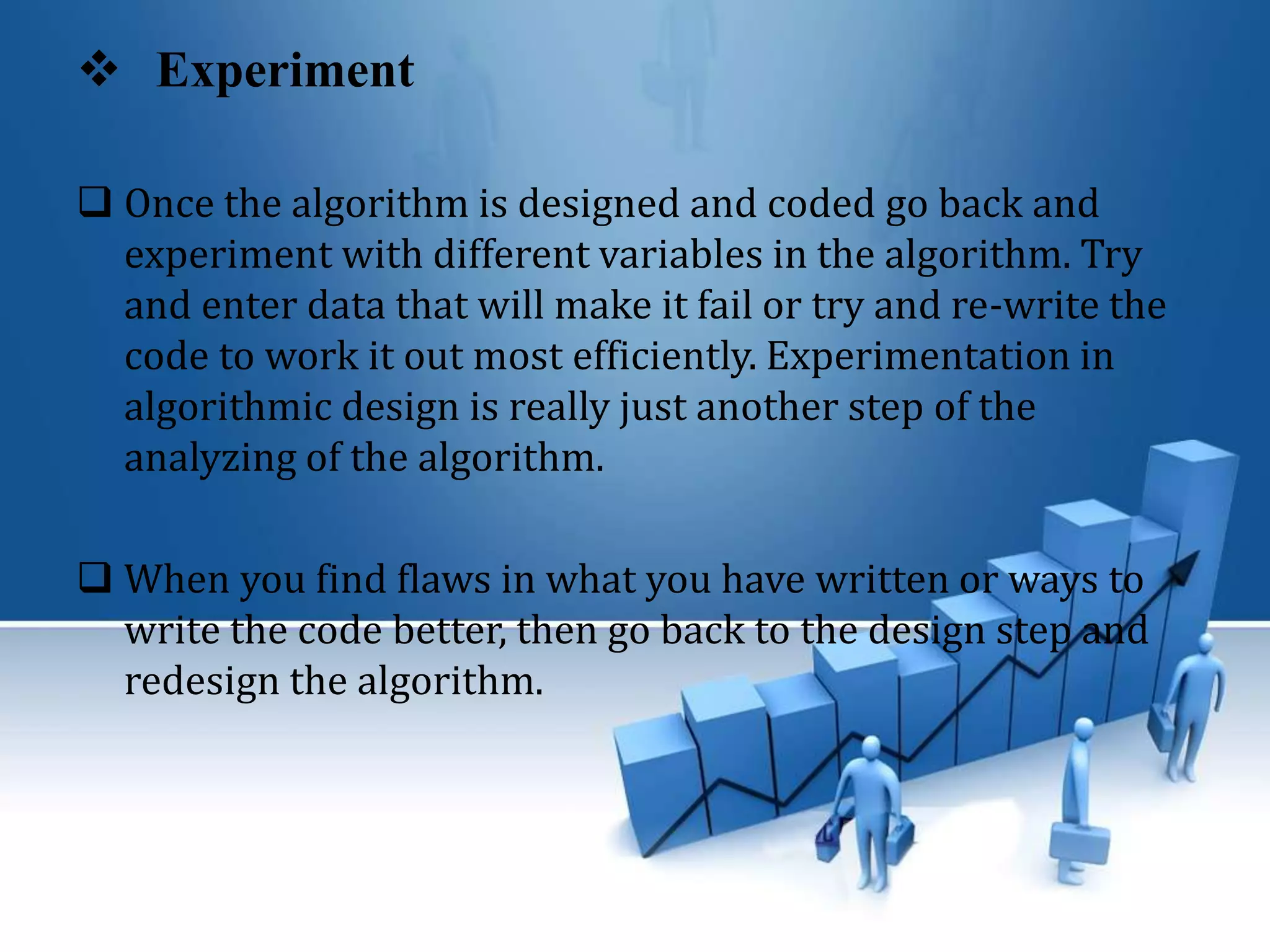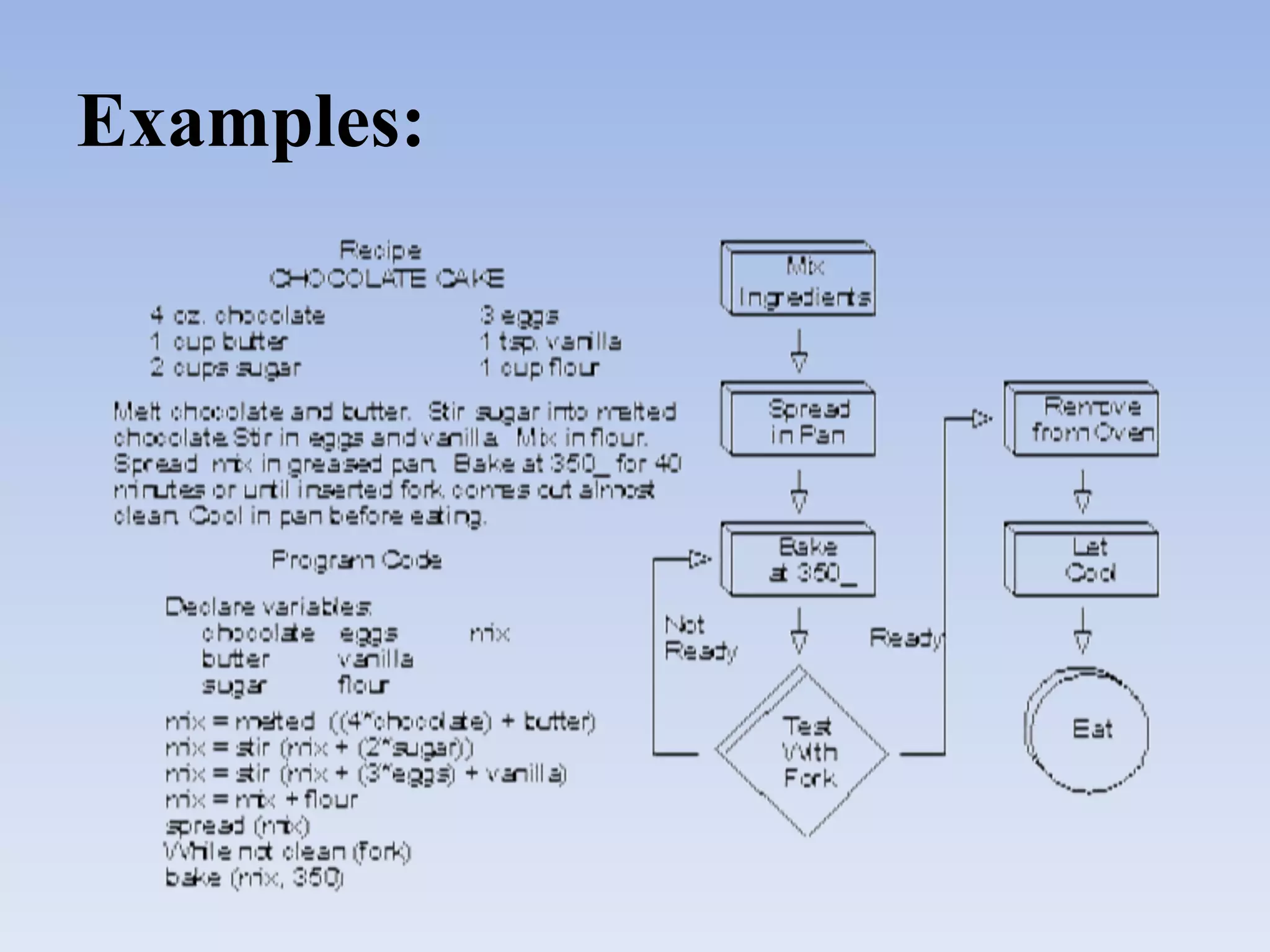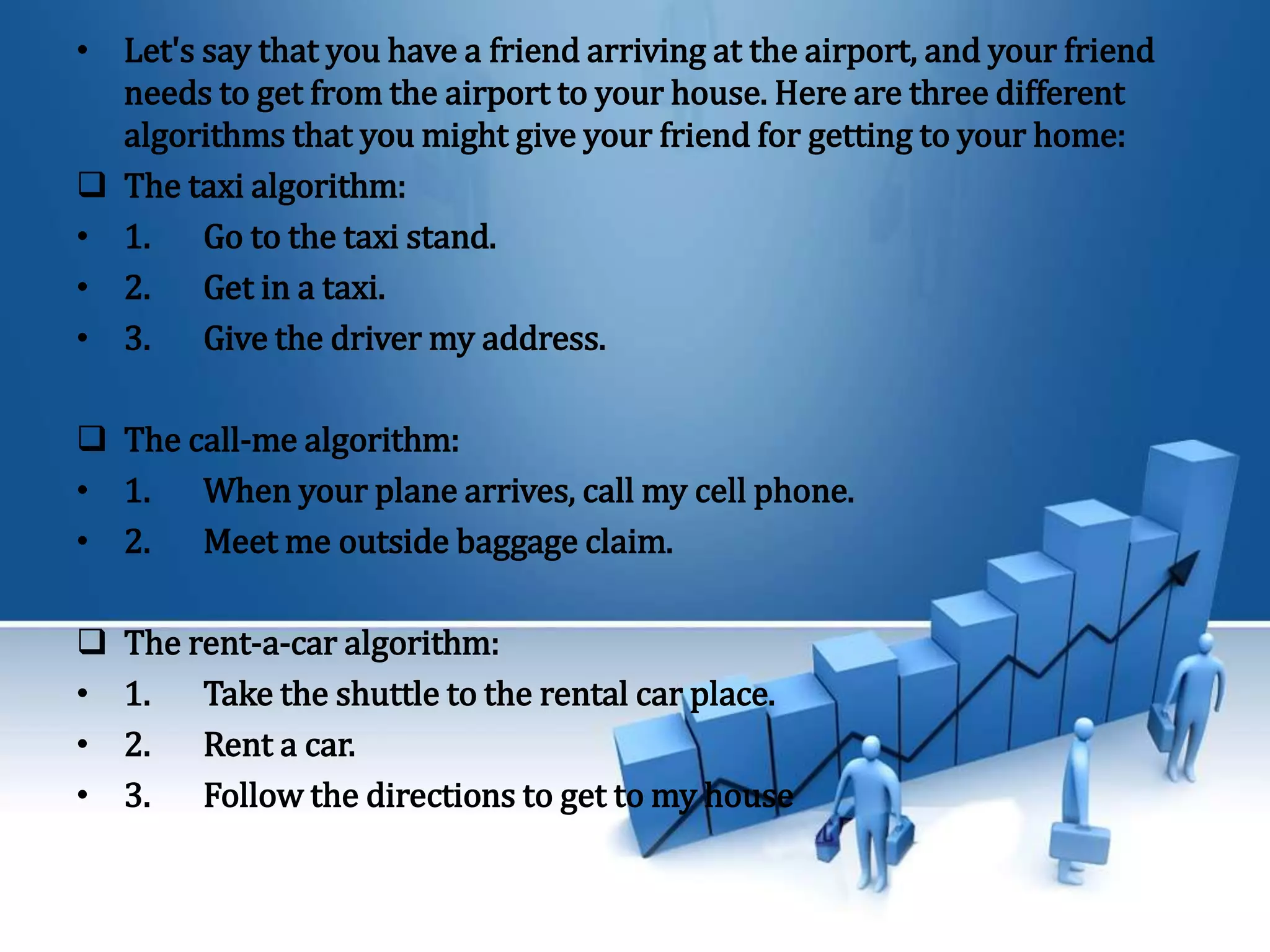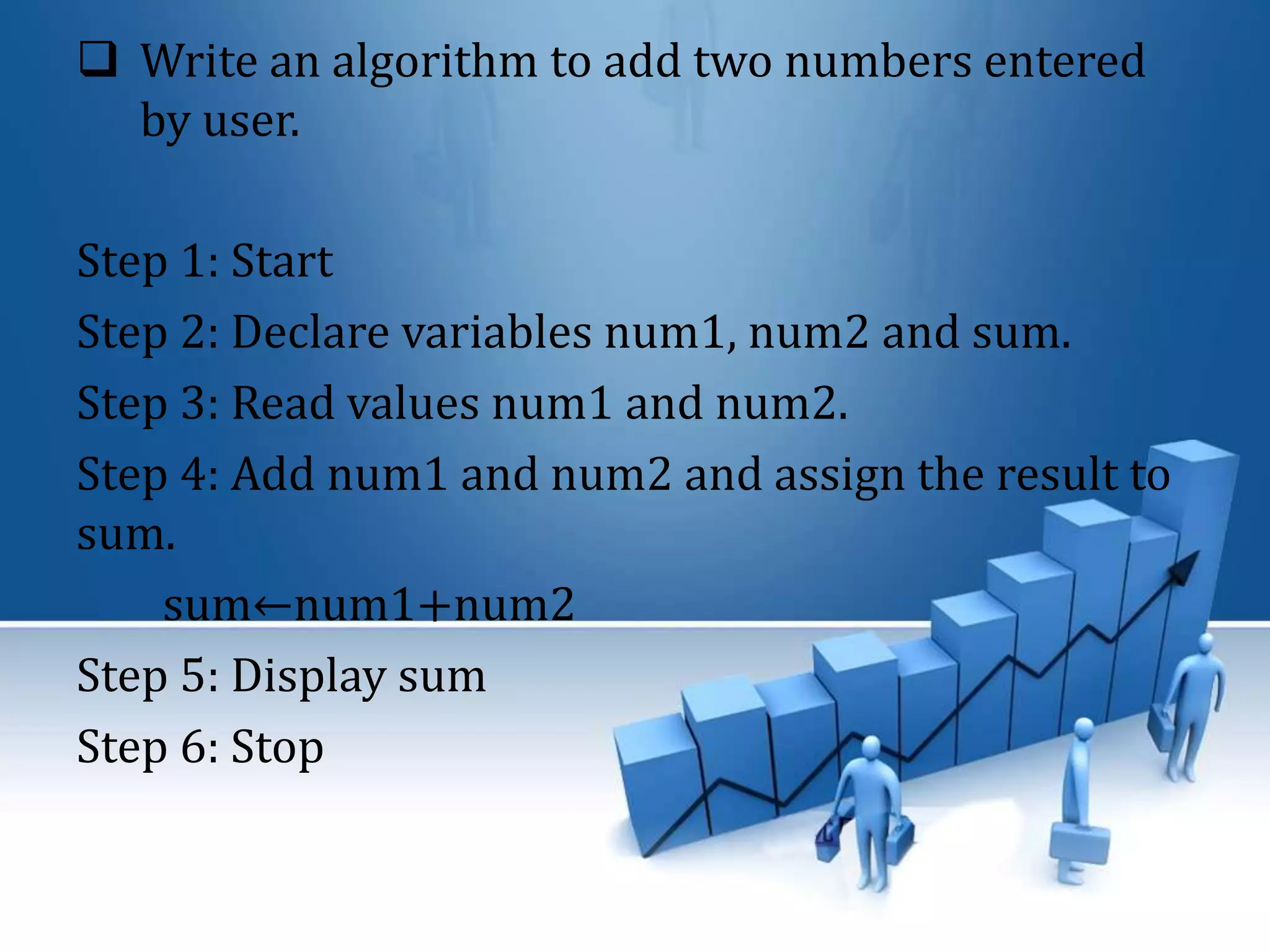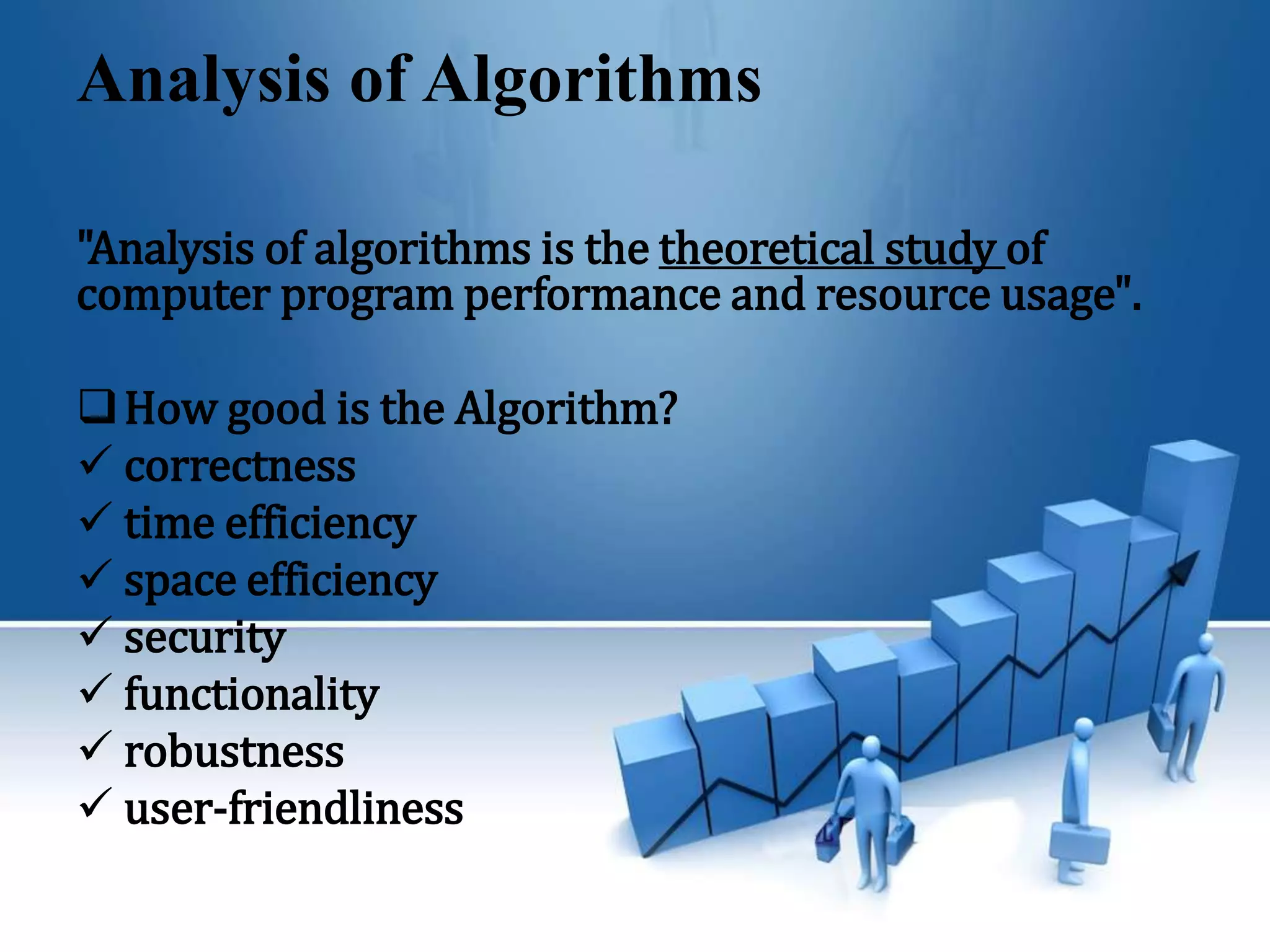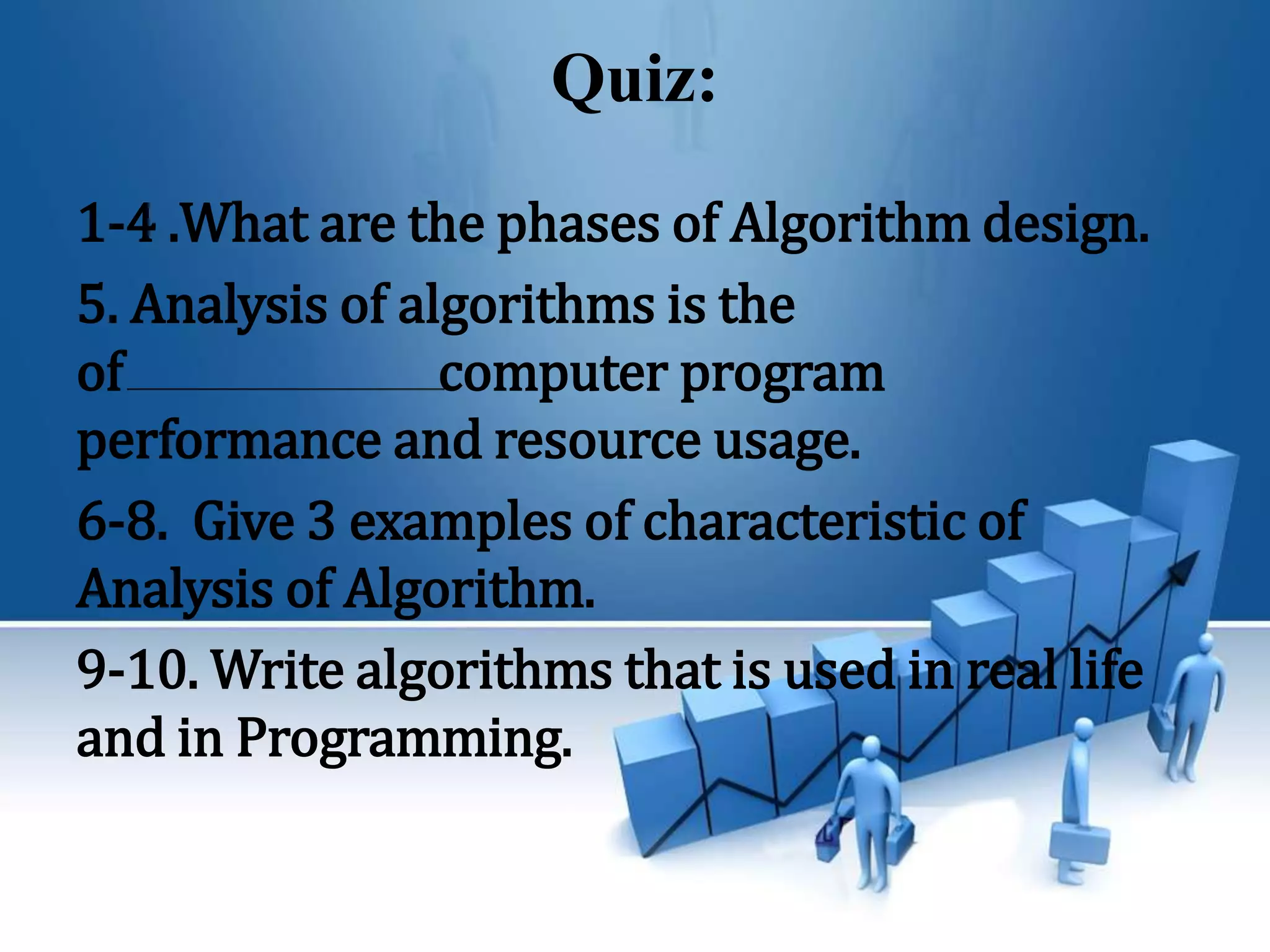The document discusses the phases of algorithm analysis and design. It begins by defining an algorithm as a finite set of instructions to carry out a sequence of operations. It then outlines the four main phases: 1) Design - identifying the problem and designing a solution using flowcharts or pseudocode. 2) Analyze - analyzing the efficiency of the designed algorithm. 3) Implement - coding the algorithm. 4) Experiment - testing the algorithm and improving its design. Examples are given of algorithms like directions to a home or adding two numbers. The document ends noting analysis of algorithms studies program performance, resources used, correctness, time/space efficiency, security, and other characteristics.

